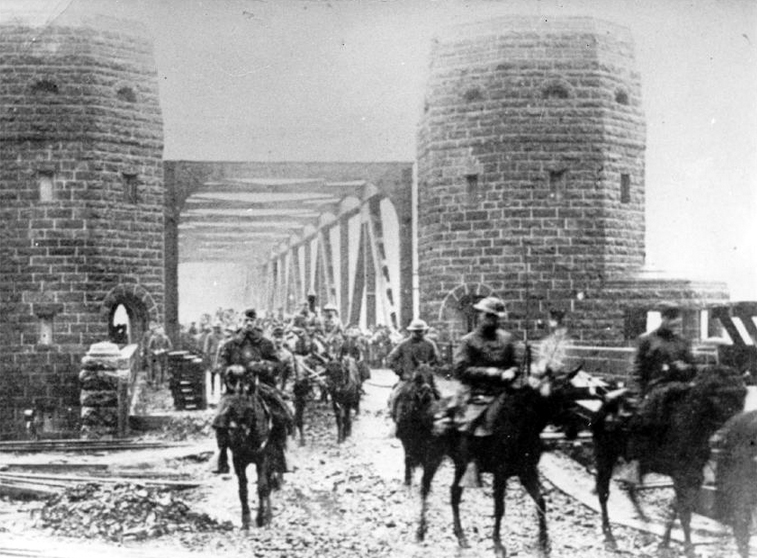|
Mária Barta
Mária Barta (1897-1969) was a Hungarian painter. Biography Barta was born in Budapest, Hungary on 28 July 1897, one of three children, all of whom pursued careers in art. She studied at the Hungarian University of Fine Arts where her teachers included Béla Iványi-Grünwald, József Rippl-Rónai, and Géza Udvary. She continued her studies at the School of Applied Arts in Vienna. For a time she lived in Paris. She was a member of KUT (New Society of Artists). Barta's work in the Hungarian National Gallery. Family Barta had two brothers. All three children spent time traveling in Europe during or after their education. (14 October 1892 - 11 September 1976) was a painter creating large-scale murals, including one in the Industrial Hall in Budapest. He developed an interest in Esperanto, illustrating books and teaching the language. (3 March 1889 - 8 May 1986) attended Iparművészeti Főiskola (College of Applied Arts) in Budapest. He became a sculptor. His work is in the coll ... [...More Info...] [...Related Items...] OR: [Wikipedia] [Google] [Baidu] |
Hungarian University Of Fine Arts
The Hungarian University of Fine Arts ( Hungarian: , MKE) is the central Hungarian art school in Budapest, Andrássy Avenue. It was founded in 1871 as the Hungarian Royal Drawing School ''(Magyar Királyi Mintarajztanoda)'' and has been called University of Fine Arts since 2001. History Until the mid-19th century, Hungarian artists were learning fine arts in Western European academies. The National Society of Hungarian Fine Arts (Országos Magyar Képzőművészeti Társulat) founded in 1861 was initiating the establishment of a Hungarian school of fine arts. Owing to this movement the Hungarian Royal Drawing School and Art Teachers' College ''(Magyar Királyi Mintarajztanoda és Rajztanárképezde)'' was opened in 1871. The present-day building of the university was built in 1877, designed by Alajos Rauscher and Adolf Lang. In later decades, the school developed programs for training not only painters and sculptors, but artist-craftsmen, mosaic- and gobelin-makers, stage de ... [...More Info...] [...Related Items...] OR: [Wikipedia] [Google] [Baidu] |
Béla Iványi-Grünwald
Béla Iványi-Grünwald (6 May 1867 – 24 September 1940) was a Hungarian painter, a leading member of the Nagybánya artists' colony and founder of the Kecskemét artists' colony. Life Born in Som, Iványi-Grünwald began his artistic studies under Bertalan Székely and Károly Lotz at the Academy of Fine Arts in Budapest (1882–86) and continued them at Munich in 1886-87 and at the Académie Julian in Paris from 1887 to 1890. From 1891 he again worked in Munich; in 1894 he travelled with Ferenc Eisenhut to Egypt, where he painted several oriental-themed works. Beginning in 1889 he had regular exhibitions at the Palace of Art in Budapest."Iványi Grünwald Béla" , from the Székely Museum of Ciuc Characteristic of his early pictures is ''A Hadúr kardja'' ("The Warrior's Sword", 1890), a proto- |
József Rippl-Rónai
József Rippl-Rónai (23 May 1861 – 25 November 1927) was a Hungarian painter. He was among the first Hungarian exponents of artistic modernism. Biography He was born in Kaposvár. After his studies at the high school there, he went to study in Budapest, where he obtained a degree in pharmacology. In 1884, he traveled to Munich to study painting at the academy. Two years later, he obtained a grant which enabled him to move to Paris and study with Mihály Munkácsy, the most important Hungarian realist painter. In 1888, he met the members of Les Nabis and under their influence he painted his first important work, ''The Inn at Pont-Aven'', notable for its dark atmosphere. His first big success was his painting ''My Grandmother'' (1894). He also painted a portrait of Hungarian pianist and composer Zdenka Ticharich (1921). Later, he returned to Hungary, where critical reception was at first lukewarm, but he eventually had a successful exhibition entitled "Rippl-Rónai Im ... [...More Info...] [...Related Items...] OR: [Wikipedia] [Google] [Baidu] |
Géza Udvary
Géza László Udvary (20 September 1872, Perbenyik - 4 February 1932, Budapest) was a Hungarian painter in the Romantic style. Biography He attended the public schools of Kassa and Debrecen, then studied painting at a private school operated by Bertalan Karlovszky.Magyar Katolikus Lexikon Brief biography. Later, he enrolled at the "School of Decorative Arts" in Budapest. He also pursued his studies, briefly, in Vienna, Munich, Paris and several places in Italy. At first, he concentrated on landscapes and portraits, but then turned to paintings of figures in the Renaissance style, for which he is best-known. After returning home, he spent seven years studying |
Hungarian National Gallery
The Hungarian National Gallery (also known as Magyar Nemzeti Galéria, ), was established in 1957 as the national art museum. It is located in Buda Castle in Budapest, Hungary. Its collections cover Hungarian art in all genres, including the works of many nineteenth- and twentieth-century Hungarian artists who worked in Paris and other locations in the West. The primary museum for international art in Budapest is the Museum of Fine Arts. Exhibitions The National Gallery houses Medieval, Renaissance, Gothic art, and Baroque Hungarian art. The collection includes wood altars from the 15th century. The museum displays a number of works from Hungarian sculptors such as Károly Alexy, Maurice Ascalon, Miklós Borsos, Gyula Donáth, János Fadrusz, Béni Ferenczy, István Ferenczy and Miklós Izsó. It also exhibits paintings and photographs by major Hungarian artists such as Brassai and Ervin Marton, part of the circle who worked in Paris before World War II ... [...More Info...] [...Related Items...] OR: [Wikipedia] [Google] [Baidu] |
Esperanto
Esperanto (, ) is the world's most widely spoken Constructed language, constructed international auxiliary language. Created by L. L. Zamenhof in 1887 to be 'the International Language' (), it is intended to be a universal second language for international communication. He described the language in ''Dr. Esperanto's International Language'' (), which he published under the pseudonym . Early adopters of the language liked the name and soon used it to describe his language. The word translates into English as 'one who hopes'. Within the range of constructed languages, Esperanto occupies a middle ground between "naturalistic" (imitating existing natural languages) and ''Constructed language#A priori and a posteriori languages, a priori'' (where features are not based on existing languages). Esperanto's vocabulary, syntax and semantics derive predominantly from languages of the Indo-European languages, Indo-European group. A substantial majority of its vocabulary (approximat ... [...More Info...] [...Related Items...] OR: [Wikipedia] [Google] [Baidu] |
Ludendorff Bridge
The Ludendorff Bridge, also known as the Bridge at Remagen, was a bridge across the river Rhine in Germany which was captured by United States Army forces in early March 1945 during the Battle of Remagen, in the closing weeks of World War II, when it was one of the few remaining bridges in the region and therefore a critical strategic point. Built during World War I to help deliver reinforcements and supplies to German troops on the Western Front, it connected Remagen on the west bank and the village of Erpel on the east bank between two hills flanking the river. Midway through Operation Lumberjack, on 7 March 1945, the troops of the 1st U.S. Army approached Remagen and were surprised to find that the bridge was still standing. Its capture, two weeks before Field Marshal Bernard Montgomery's planned Operation Plunder, enabled the U.S. Army to establish a bridgehead on the eastern side of the Rhine. After the U.S. forces captured the bridge, German forces tried to destr ... [...More Info...] [...Related Items...] OR: [Wikipedia] [Google] [Baidu] |
1897 Births
Events January * January 2 – The International Alpha Omicron Pi sorority is founded, in New York City. * January 4 – A British force is ambushed by Chief Ologbosere, son-in-law of the ruler. This leads to a punitive expedition against Benin. * January 7 – A cyclone destroys Darwin, Australia. * January 8 – Lady Flora Shaw, future wife of Governor General Lord Lugard, officially proposes the name "Nigeria" in a newspaper contest, to be given to the British Niger Coast Protectorate. * January 22 – In this date's issue of the journal ''Engineering'', the word ''computer'' is first used to refer to a mechanical calculation device. * January 31 – The Czechoslovak Trade Union Association is founded in Prague. February * February 10 – Freedom of religion is proclaimed in Madagascar. * February 16 – The French conquer the island of Raiatea and capture the rebel chief Teraupo'o, ending the Leeward Islands War and brin ... [...More Info...] [...Related Items...] OR: [Wikipedia] [Google] [Baidu] |
1969 Deaths
1969 (Roman numerals, MCMLXIX) was a common year starting on Wednesday of the Gregorian calendar, the 1969th year of the Common Era (CE) and ''Anno Domini'' (AD) designations, the 969th year of the 2nd millennium, the 69th year of the 20th century, and the 10th and last year of the 1960s decade. Events January * January 4 – The Government of Spain hands over Ifni to Morocco. * January 5 – Ariana Afghan Airlines Flight 701 crashes into a house on its approach to London's Gatwick Airport, killing 50 of the 62 people on board and two of the home's occupants. * January 14 – USS Enterprise fire, An explosion aboard the aircraft carrier USS Enterprise (CVN-65), USS ''Enterprise'' near Hawaii kills 28 and injures 314. * January 16 – First successful docking of two crewed spacecraft in orbit and the first transfer of crew from one space vehicle to another (by a space walk) between Soviet craft Soyuz 5 and Soyuz 4. * January 18 – Failure of Soyuz 5's service module to separ ... [...More Info...] [...Related Items...] OR: [Wikipedia] [Google] [Baidu] |
Painters From Budapest
Painting is a Visual arts, visual art, which is characterized by the practice of applying paint, pigment, color or other medium to a solid surface (called "matrix" or "Support (art), support"). The medium is commonly applied to the base with a brush. Other implements, such as palette knives, sponges, airbrushes, the artist's fingers, or even a dripping technique that uses gravity may be used. One who produces paintings is called a painter. In art, the term "painting" describes both the act and the result of the action (the final work is called "a painting"). The support for paintings includes such surfaces as walls, paper, canvas, wood, glass, lacquer, pottery, leaf, copper and concrete, and the painting may incorporate other materials, in single or multiple form, including sand, clay, paper, cardboard, newspaper, plaster, gold leaf, and even entire objects. Painting is an important form of visual arts, visual art, bringing in elements such as drawing, Composition (visual art ... [...More Info...] [...Related Items...] OR: [Wikipedia] [Google] [Baidu] |





